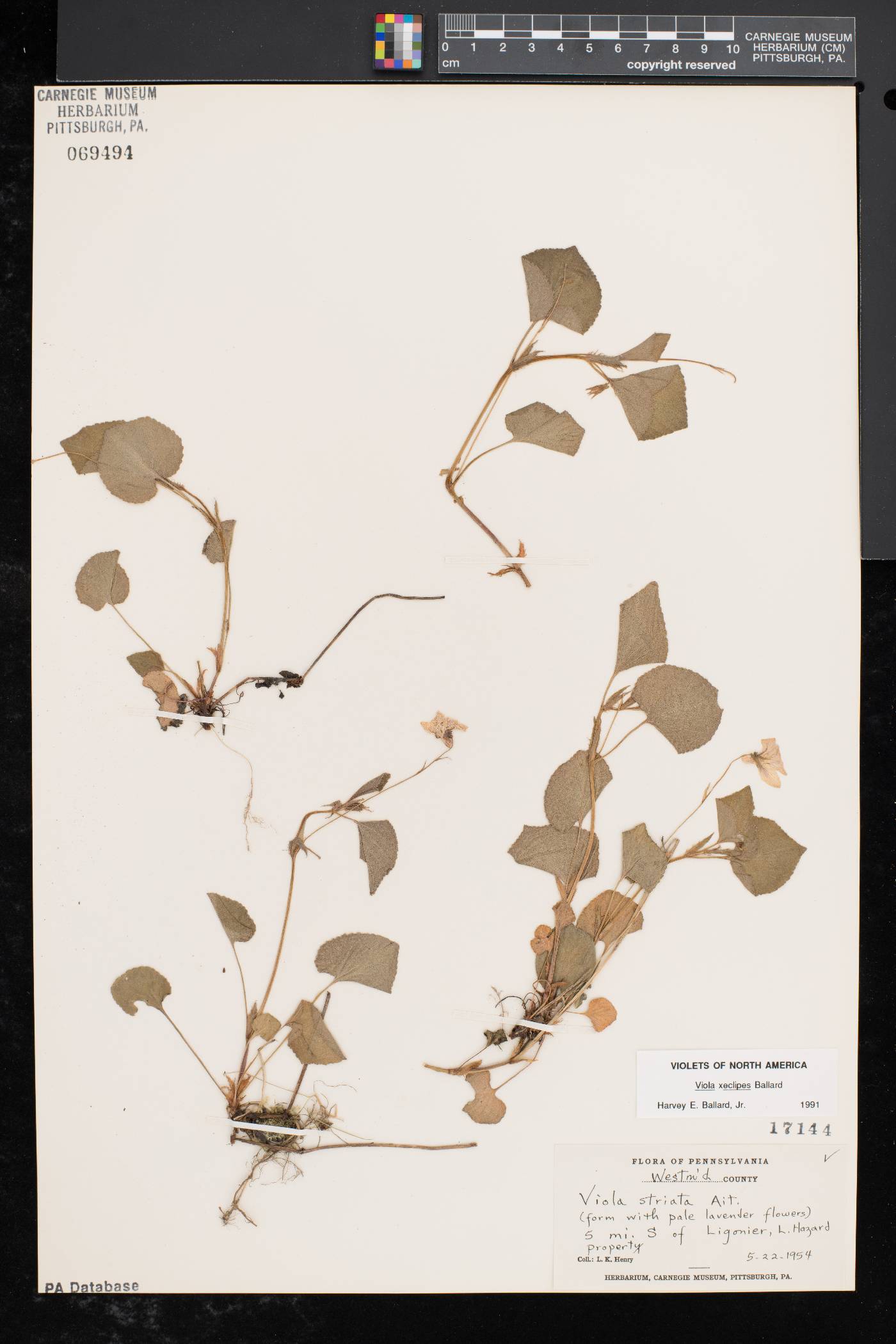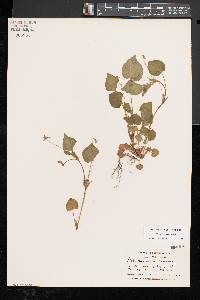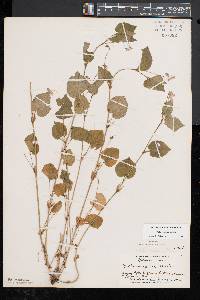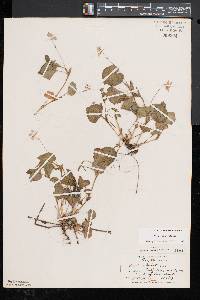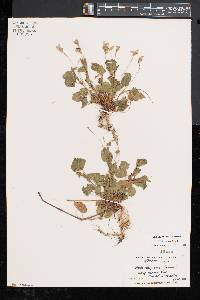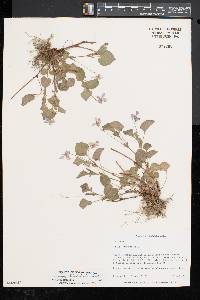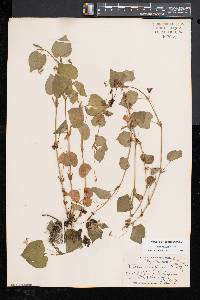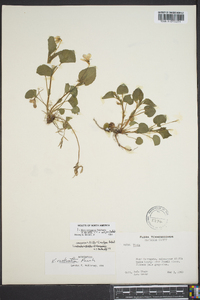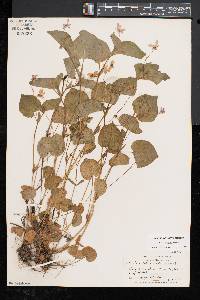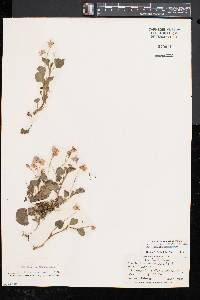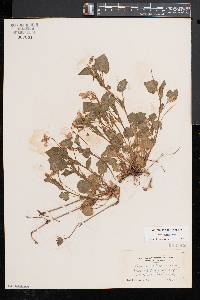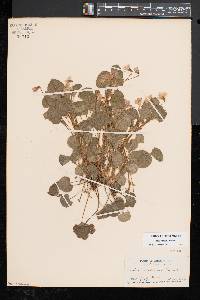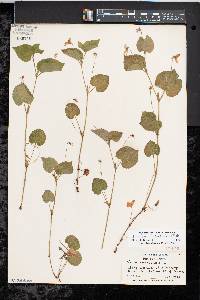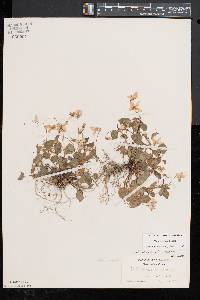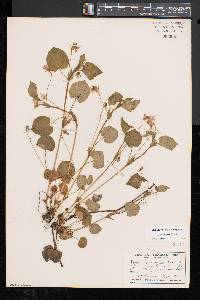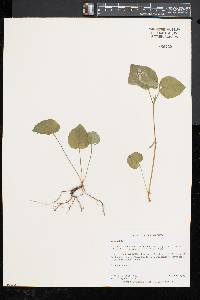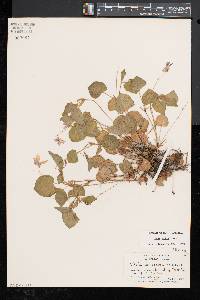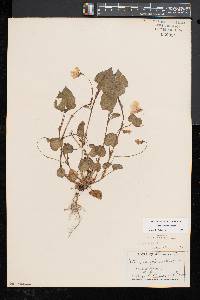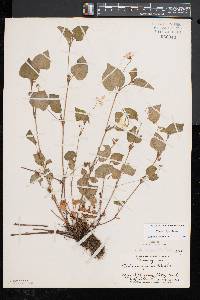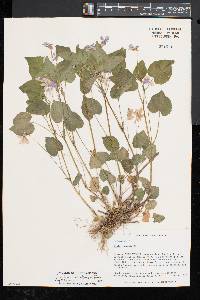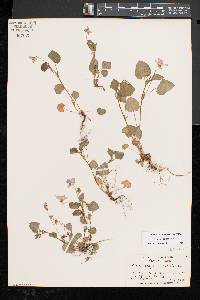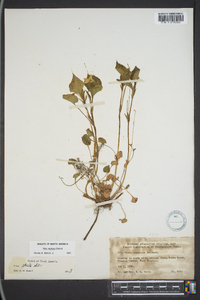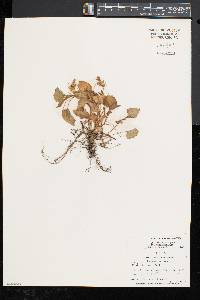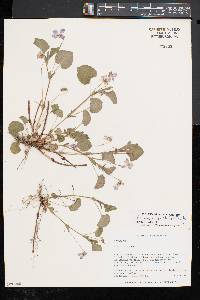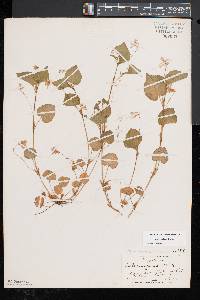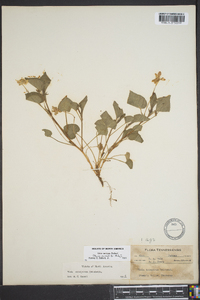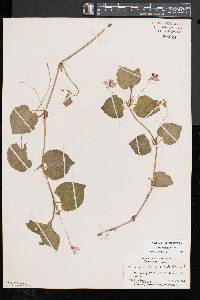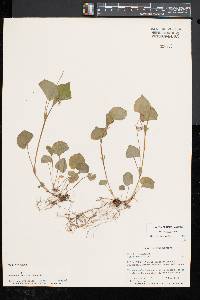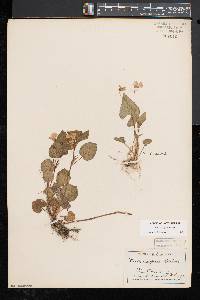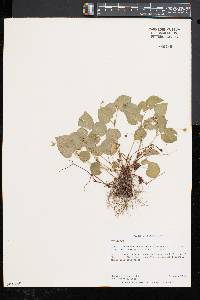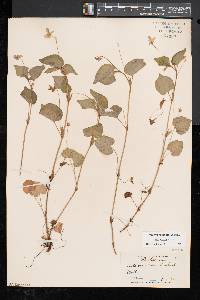
|
|
|
|
Family: Violaceae
|
Perennial herb 5 - 25 cm tall Leaves: both basal and alternate, long-stalked, irregularly round-toothed, 1 - 3 cm long, broadly egg-shaped to oblong with rounded or short-pointed tips. The upper stem leaves are often sparsely long-hairy on the top surface near the edges, and also occasionally have small dense patches of forked hairs on the upper surface. Stipules green, 1 - 2 cm long, lance-shaped to more egg-shaped, and moderately to heavily fringed with narrowly triangular segments. Flowers: in upper leaf axils, long-stalked, pale watery blue with obvious white center, 2 - 2.5 cm long, bilaterally symmetric with two upper petals, two lateral petals, and lower petal with base modified into a relatively long (4 - 5 mm) nectar spur. Sepals: five, green, barely to moderately fringed with slender bristles, narrowly lance-shaped to linear with obvious ear-like appendages (auricles) at the base. The basal auricles elongate to twice or more their width. Petals: five, separate, all differently shaped, pale blue beyond the middle with broad white basal zone. The two lateral petals, and frequently the upper two, have a dense beard of hairs near the base, and the lowest petal is prolonged at its base into a 4 - 5 mm long round-tipped spur. Stamens: five, separate, but very tightly arranged so anthers touch as they surround ovary. The filaments are very short, and the lower two stamens have spur-like nectaries on their backs that extend into the spur of the lower petal. Pistil: with a single-chambered, superior ovary; and a single slender style that bends at the tip below the stigma. Stems: clustered (arising from a rhizome), erect to spreading or ascending or reclining, mostly hairless, producing both leaves and flowers. Similar species: Viola x eclipes has many characters intermediate between its two parents V. labradorica and V. striata. It is most commonly mistaken for V. labradorica, but that species differs by its more kidney-shaped to broad egg-shaped leaves, narrower linear-lance-shaped and sparsely long-toothed stipules, lack of fringe or bristles on the sepals, entirely light blue flowers, and a less open flower face due to less spreading petals. Distinguishing characters for V. striata include long-tapering pointed leaf tips, strongly fringed stipules, sepals with more obvious bristled edges, and solid creamy to white flowers. Flowering: April to June Habitat and ecology: Not common in the Chicago Region, though probably often overlooked or misidentified. Occurring in areas where both parent species coexist such as swamp forests, low areas in mesic forests, areas where rich alkaline floodplains grade into acidic swamps, also along paths, natural drainages, and other more disturbed areas where intermediate soil conditions occur [Ballard 1989]. Occurence in the Chicago region: native Notes: The type specimen for this hybrid was collected in St. Clair Co., MI in a floodplain near a stream where V. striata was also seen. Etymology: Viola is the classical name for the genus. Eclipes refers to the previously "eclipsed" nature of the hybrid considering it was (and is) regularly mistaken for its parent V. labradorica. Author: The Field Museum |

